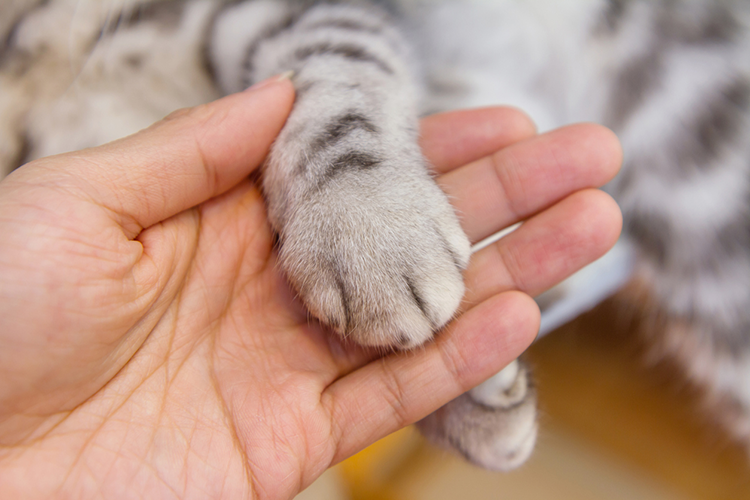For opponents of declawing cats, 2017 looked like a good year — with the backing of animal rights groups and veterinarians, lawmakers introduced a bill that would make New York the first state to ban the controversial procedure, and the effort had received widespread positive press coverage.
Then, as happens every year, the bill died before it was called for a vote. In New York, the state’s influental Veterinary Medical Society opposed a declawing ban, arguing that it would take away the option for a sometimes necessary procedure, and would ultimately lead to more owners surrendering their cats to rescues and shelters.
For those who have been fighting the declawing battle for years, it was another frustrating setback after a promising start. So why is it so difficult to get politicians to take the issue seriously, and why can’t declawing bans seem to get traction beyond the local level?
After all, declawing is banned in almost two dozen countries, and it’s opposed by a wide range of groups, including the Humane Society of the United States, the ASPCA, and the American Animal Hospital Association. Earlier this year, the Canadian Veterinary Medical Association announced it’s opposed to declawing as an elective surgery, and America’s northern neighbors are pushing for a national ban on the procedure.
ACTIVISTS: PEOPLE STILL DON’T KNOW WHAT DECLAWING CATS ENTAILS
Veterinarians and animal rights advocates who spoke to Front Page Meews said it’s a multi-pronged problem with several hurdles, including lack of education and reliance on outdated and disproved medical advice.
On a general level, there are still many cat owners and prospective cat owners who don’t understand what declawing means, said Brian Shapiro, the New York State director of the Humane Society of the United States. They don’t realize that declawing involves removing the bone from each toe up to the knuckle, Shapiro said, and aren’t warned that declawing has permanent detrimental effects. Declawing permanently alters a cat’s gait, leading to issues like arthritis and back problems, and research — such as a 2017 Journal of Feline Medicine and Surgery study — show declawing results in permanent, lasting pain for cats that often leads to more behavioral problems, like refusal to use a litter box and increased instances of biting.
“Many people think it’s some kind of pedicure for animals when it’s an elective surgery, it’s a convenience surgery,” said Shapiro, who calls declawing “an antiquated, cruel practice.”
VETERINARIANS NEED TO BE EDUCATED TOO
On the other side there’s ignorance among veterinarians, said Dr. Jennifer Conrad, founder and director of the Paw Project, a national organization dedicated to banning declawing procedures. Some veterinarians still buy into old arguments supporting declawing, while others are afraid of losing clients — and the income that comes with performing declawing procedures.
“There is no argument for declawing at all. It des not help the cat, it does not keep cats in their homes, it does not protect human health,” Conrad told Front Page Meews. “Those are all easily refutable arguments, so that leaves us with either the ignorant veterinarian who doesn’t realize they’re causing more harm than good, or else it’s a money maker. And we do know it is a money maker.”
Declawing is a $1 billion business for American veterinarians, according to the Paw Project. Nationally, 75 percent of veterinarians perform declawing procedures, the group says, and one in four U.S. cats are declawed during their lifetimes.
Groups like the New York State Veterinary Medical Society argue that an outright ban would lead to more owners abandoning their cats, and would make it impossible for people with skin conditions and immuno-deficiencies to keep feline companions.
But declawing cats does not protect immuno-compromised cat owners, according to the Centers for Disease Control, the National Institutes of Health and the Infectious Diseases Society of America. Supporters of declawing bans say the opposite is true, pointing to studies that show declawed cats are much more likely to bite — and cat bites have much higher infection risks than scratches.
DECLAWING IS NOT A LAST RESORT
The New York State Veterinary Medical Society did not return calls from Front Page Meews, but the organization’s outgoing executive director, Jennifer Mauer, told the Associated Press earlier this year that declawing is a final option for cat owners.
“Veterinarians turn to (declawing) as a last resort, only after various educational and training efforts are found to be unsuccessful,” Mauer said.
But Conrad pointed out that declawing proponents recommend having the procedure done during kittenhood, at three months of age. At three months, kittens are still essentially babies, and veterinarians often recommend declawing at the same time the kitten is spayed or neutered. Advocates of a ban say they wonder how veterinary groups can claim declawing is a final option when it’s so often performed on cats in infancy.
“That’s a big fallacy to say it’s a last resort,” Conrad said.
MUTILATING KITTENS TO SAVE COUCHES
Queens-based veterianarian Dr. Sue Whittred put it flatly: “Kittens are getting declawed for convenience.”
The Animal Hospital of the Rockaways, where Whittred works, abolished the practice of declawing cats more than four years ago. Some clients are already familiar with the reality of declawing, while veterinarians at the animal hospital are always willing to explain to pet parents why they won’t perform the surgery.
“We talk to them about it and tell them exactly what it is,” said Whittred, who said she also believes education is the key component to an ultimate ban on the procedure.
While the New York State Veterinary Medical Society officially opposes a declawing ban, some 150 individual veterinarians in the state signed a letter to legislators urging them to support the ban, Shapiro said.
Those who support declawing say that it’s in the best interests of cats, arguing that they’re often surrendered to shelters because of problem scratching. They deny the credibility of studies pointing to adverse reactions to declawing surgery, saying there’s no real evidence that declawing hurts cats or changes their long-term behavior.
To Conrad, ending the practice is common sense. She says groups that support declawing can’t cite peer-reviewed scientific studies showing there are no long-term adverse effects.
“If [a person who has had a cat declawed] were to come in with a puppy and say, ‘My puppy’s chewing my slippers,’ will you remove all his teeth?” she asked. “It just doesn’t make sense. There’s no good reason to declaw a cat.”
NO OTHER CONCLUSION: DECLAWING HURTS CATS
Shapiro, who is also a veterinary assistant and has been a shelter director, pointed to studies that show instances of surrendered cats actually decreased in cities such as Los Angeles, where declawing is banned. But in the vast majority of places where declawing is legal in the U.S., many cats who come into shelters have behavioral issues such as biting and litter box aversion that can be directly tied to complications from declawing.
Veterinary groups that oppose declawing bans, he said, aren’t paying attention to the “growing tide of opposition” from within the industry.
“Veterinary science is based on facts,” Shapiro said. “You can come to no other conclusions that declawing hurts these animals.”






